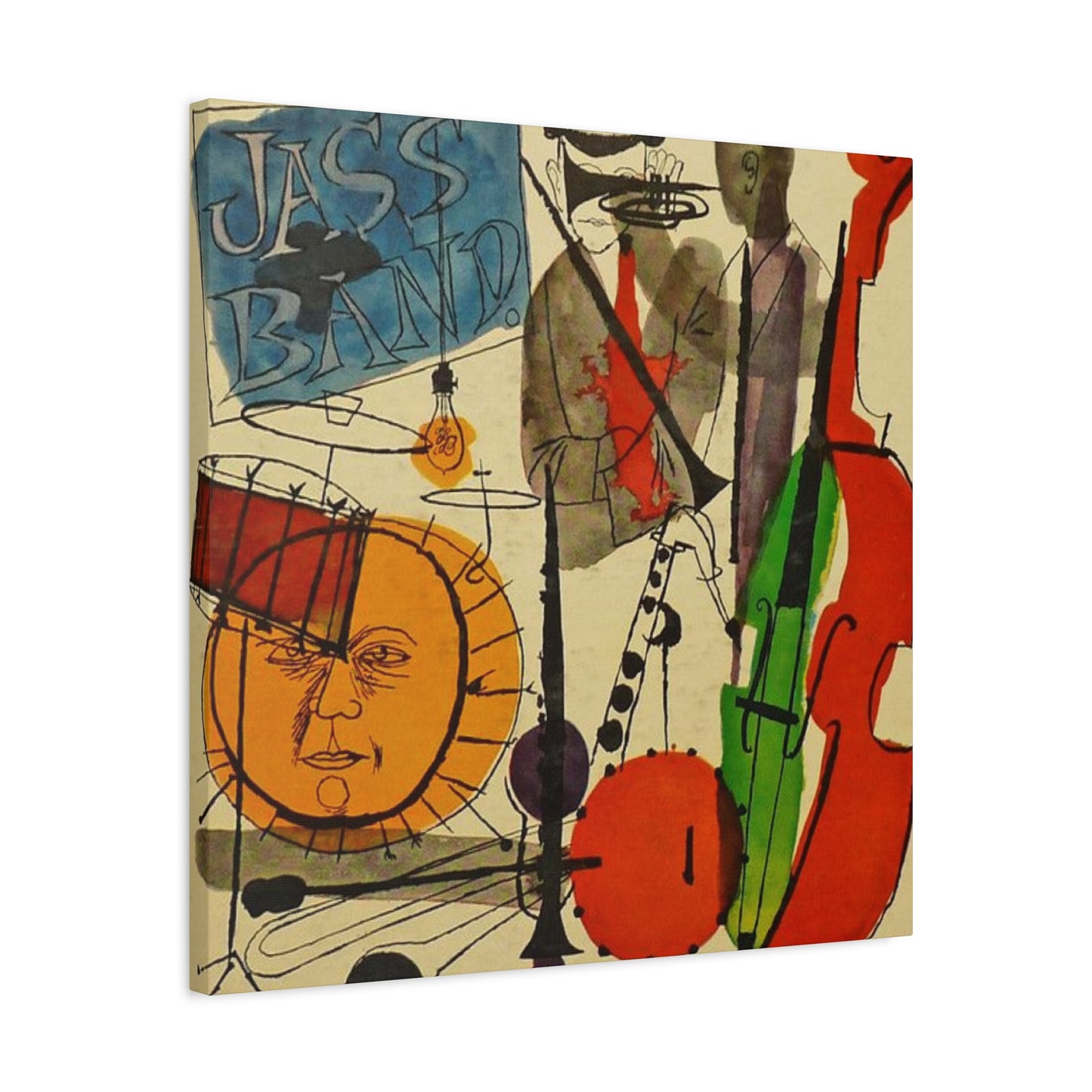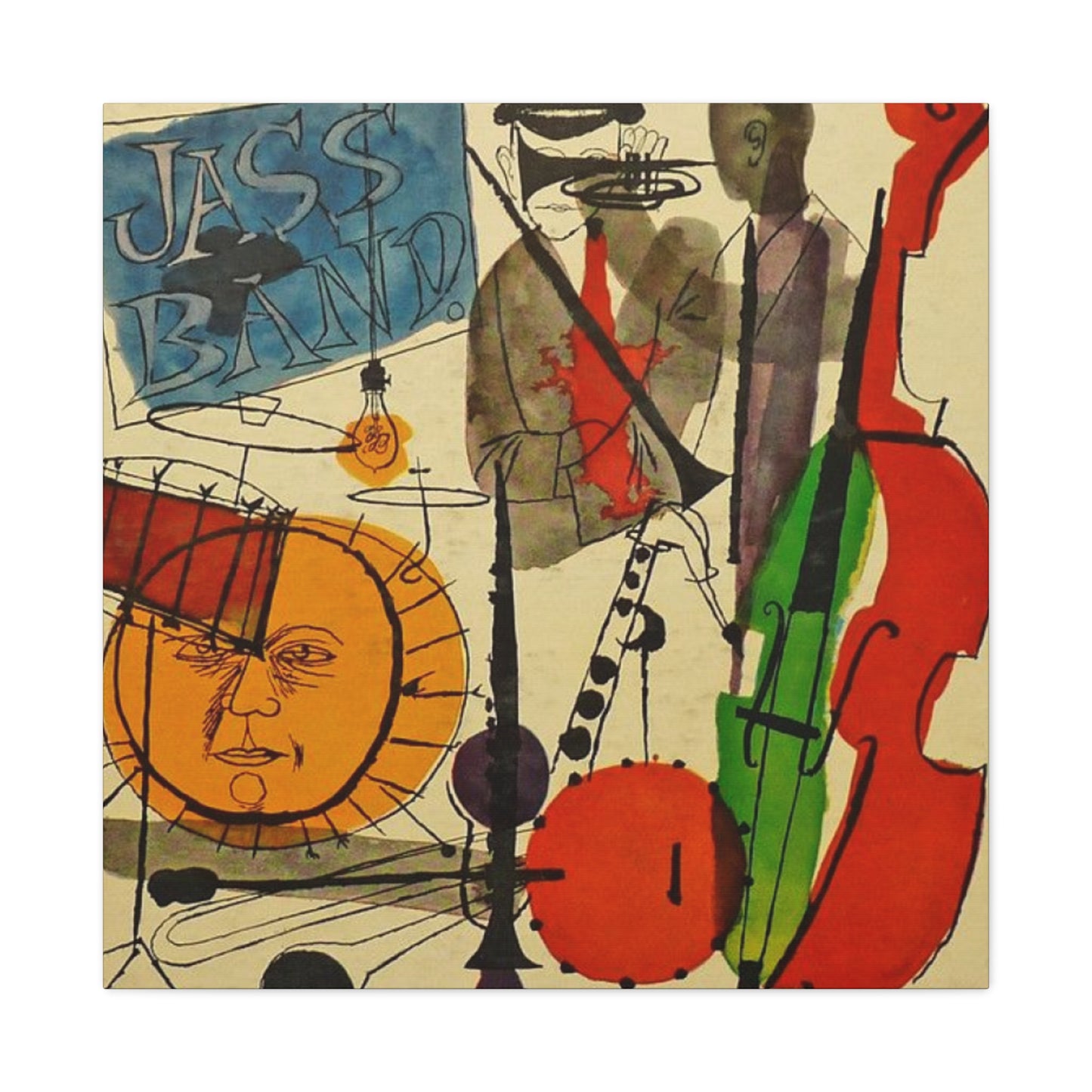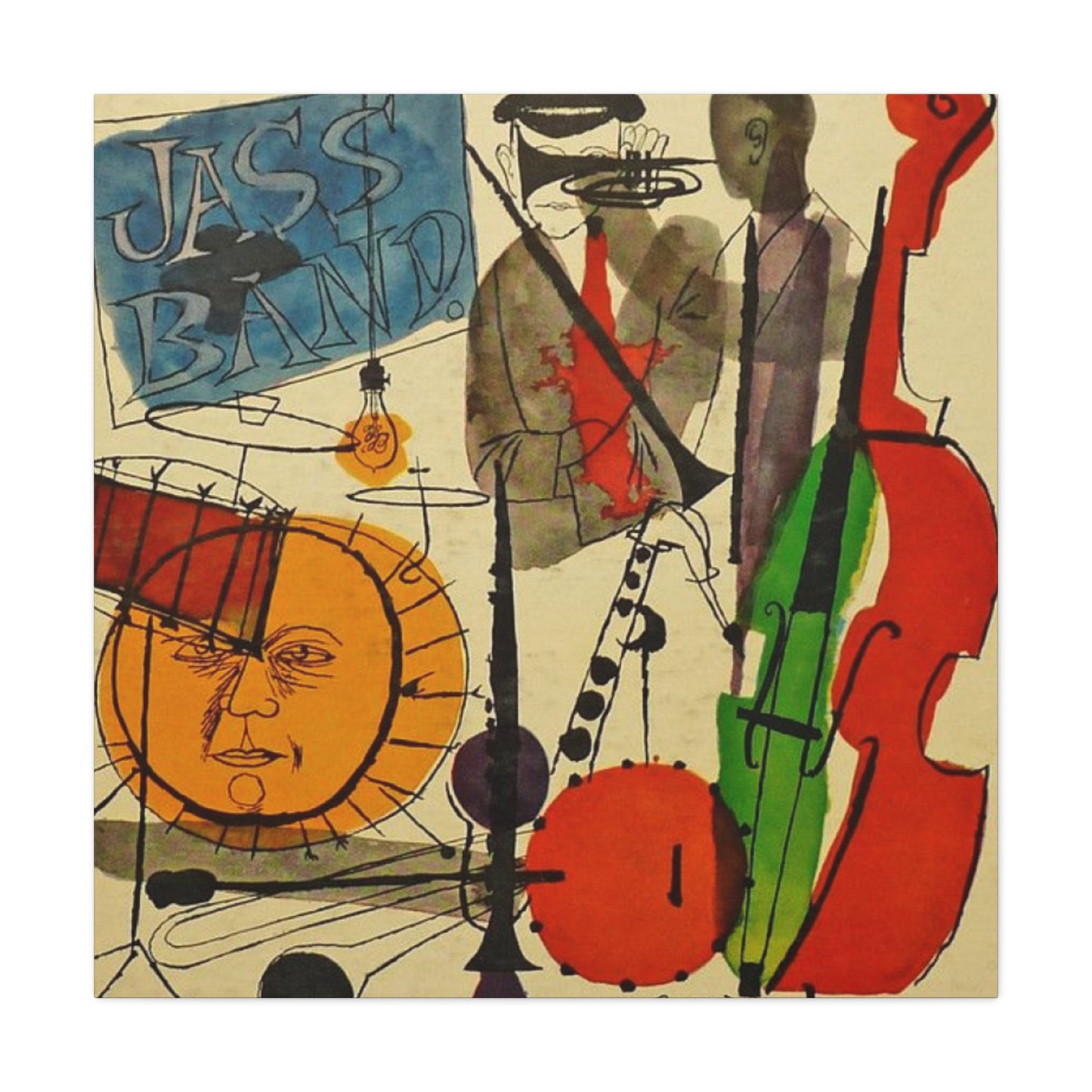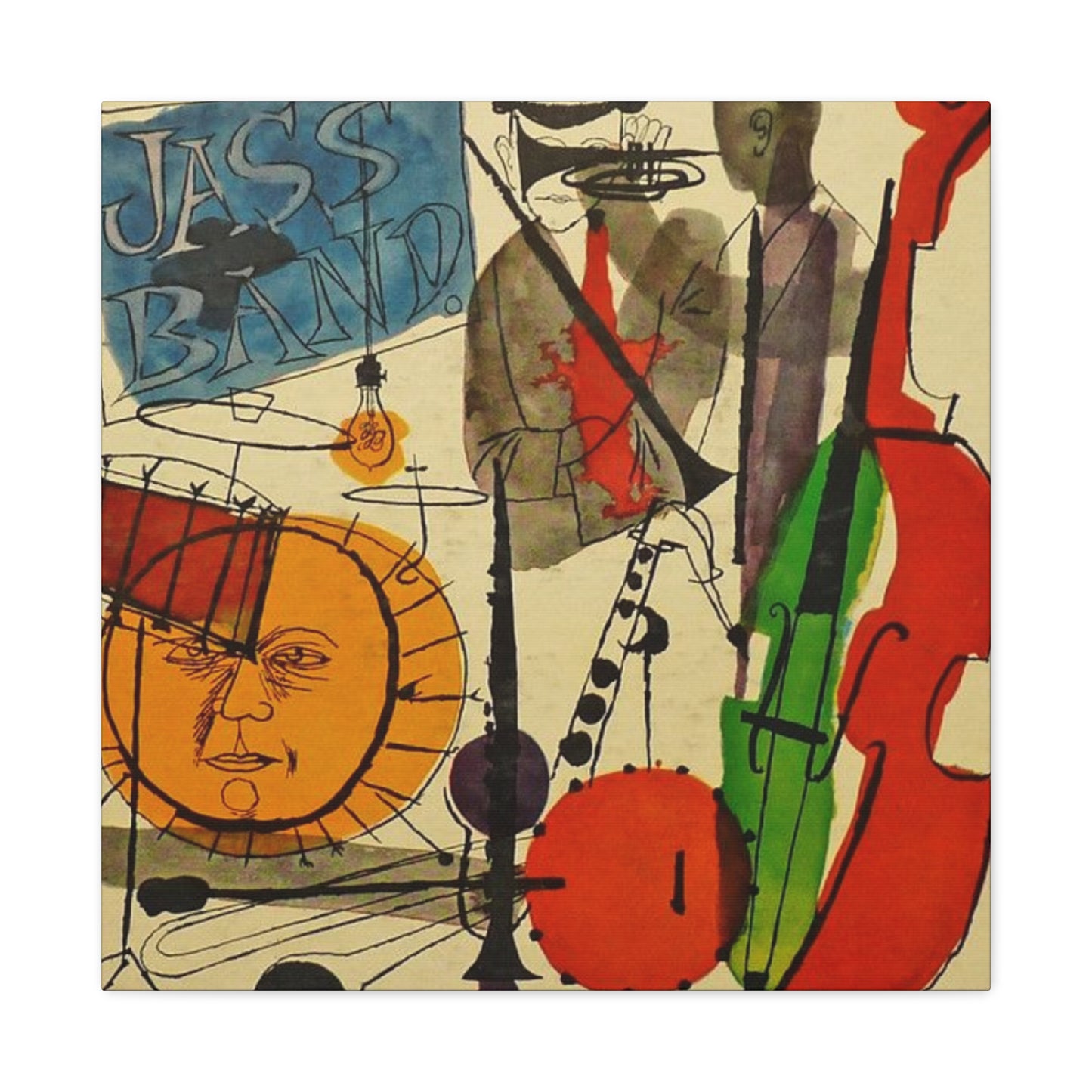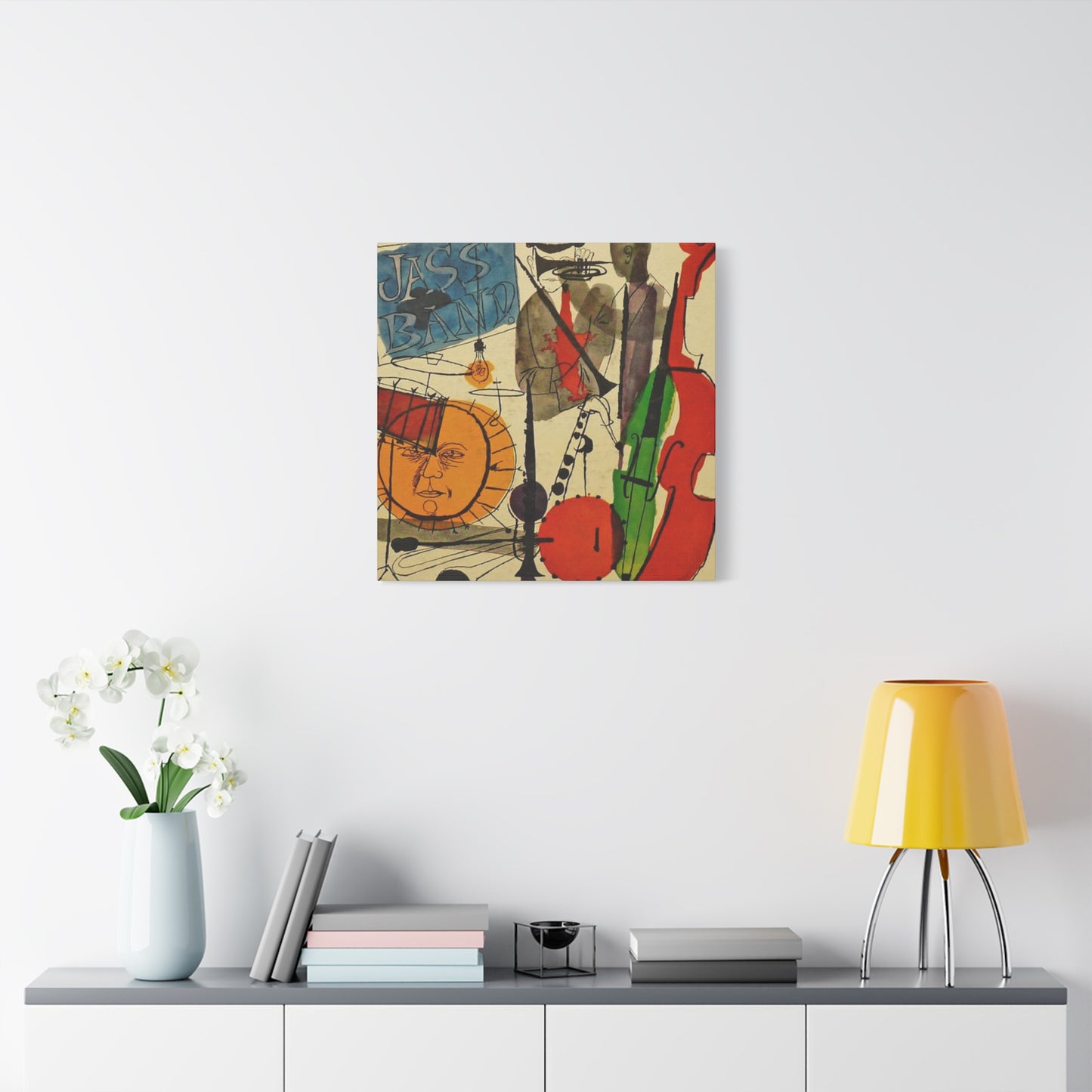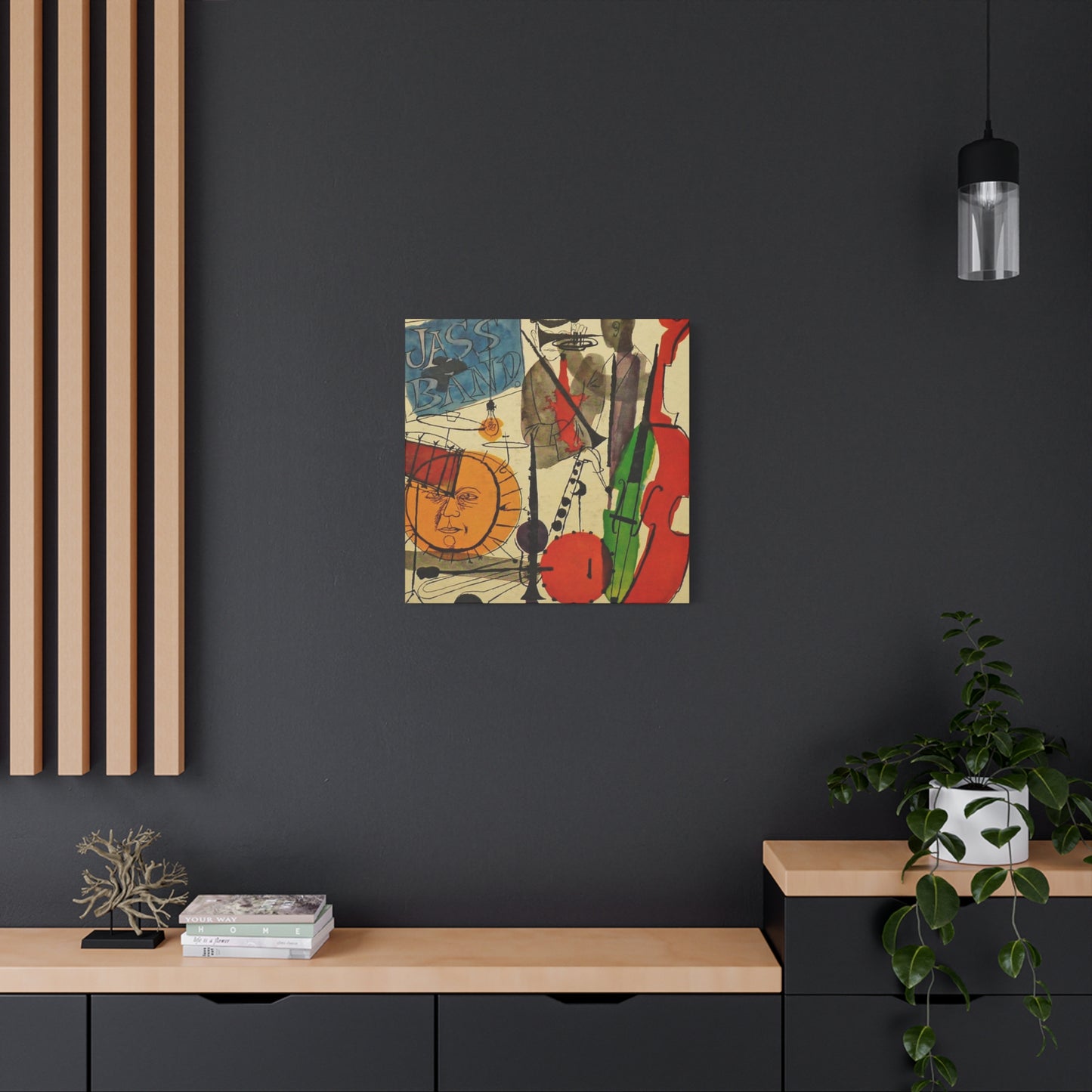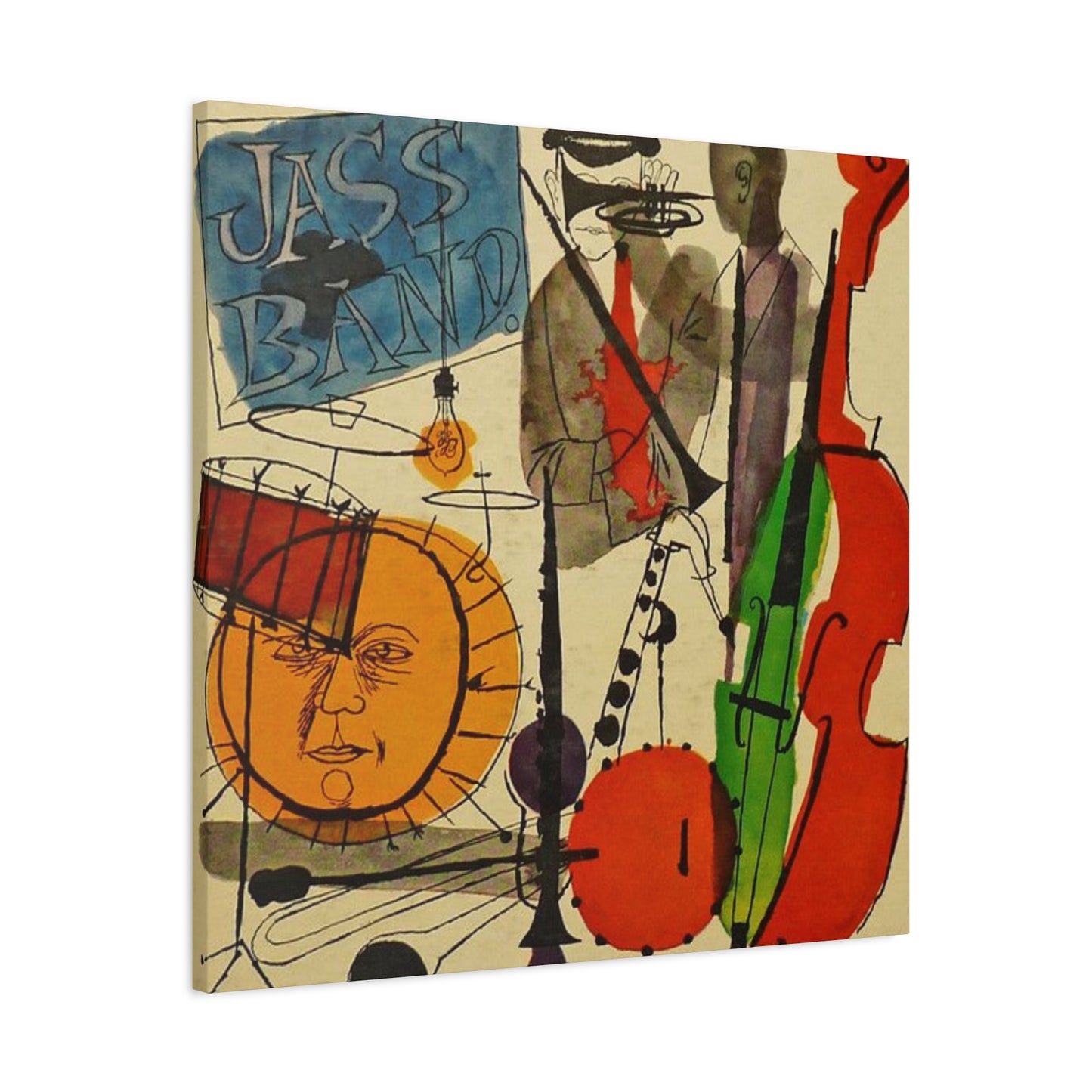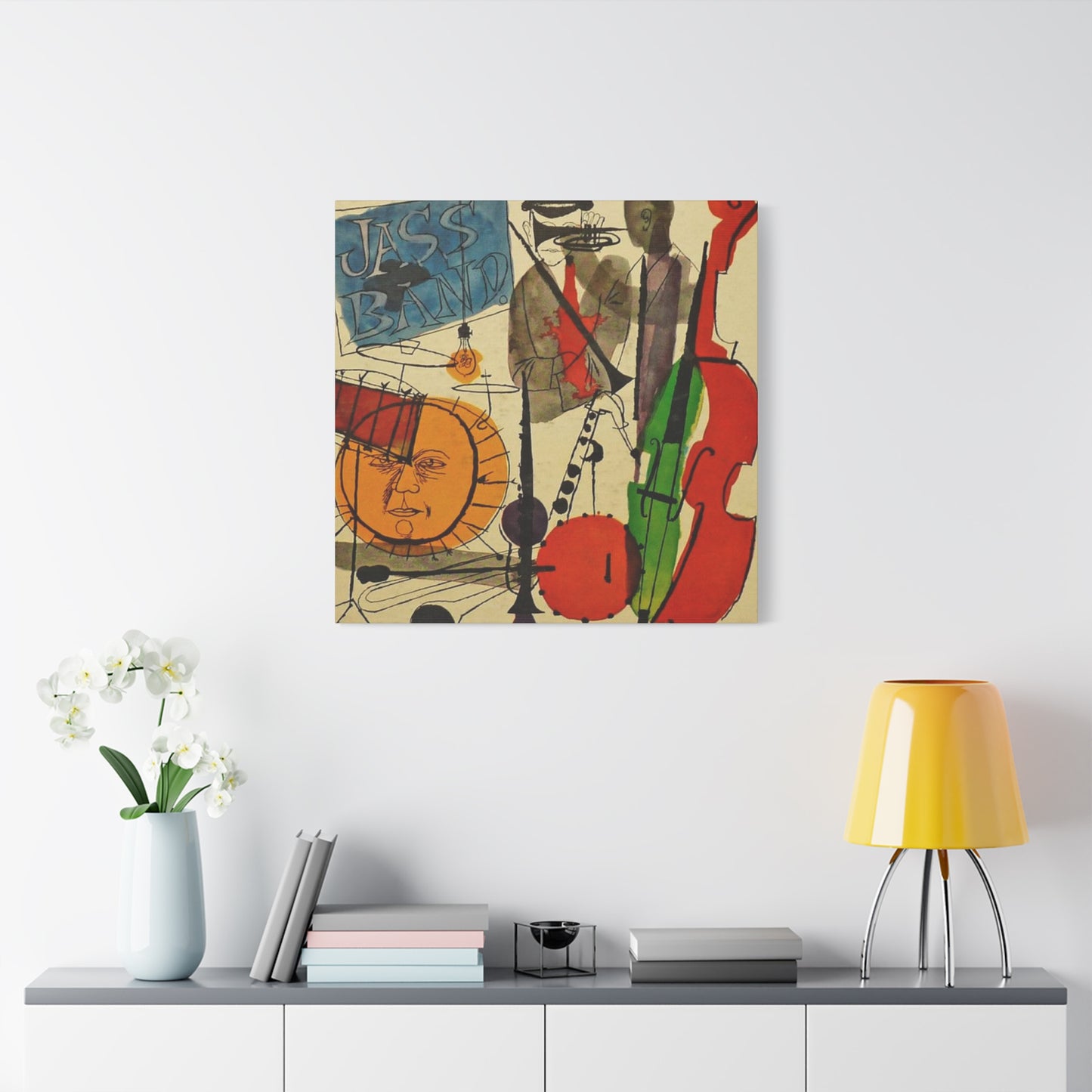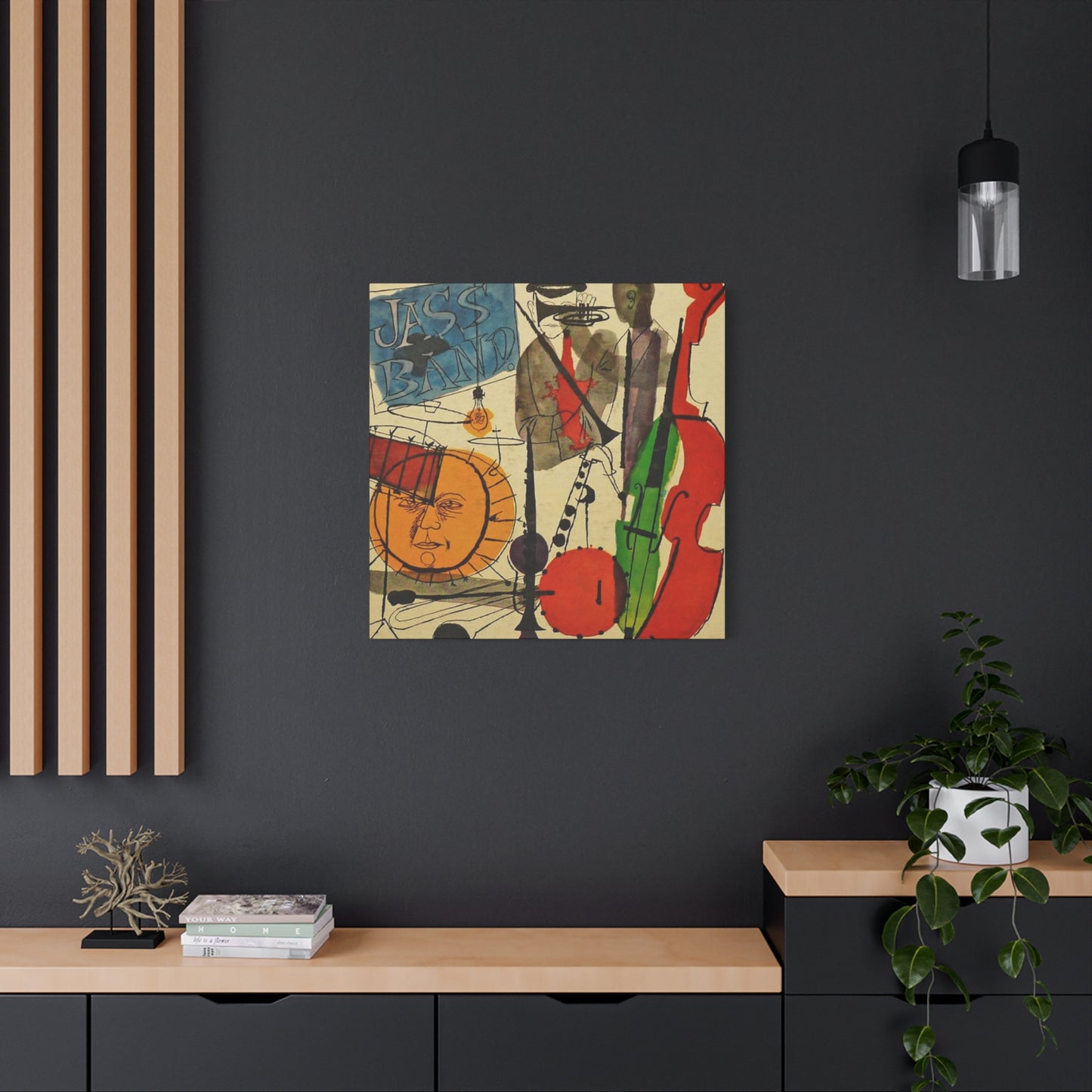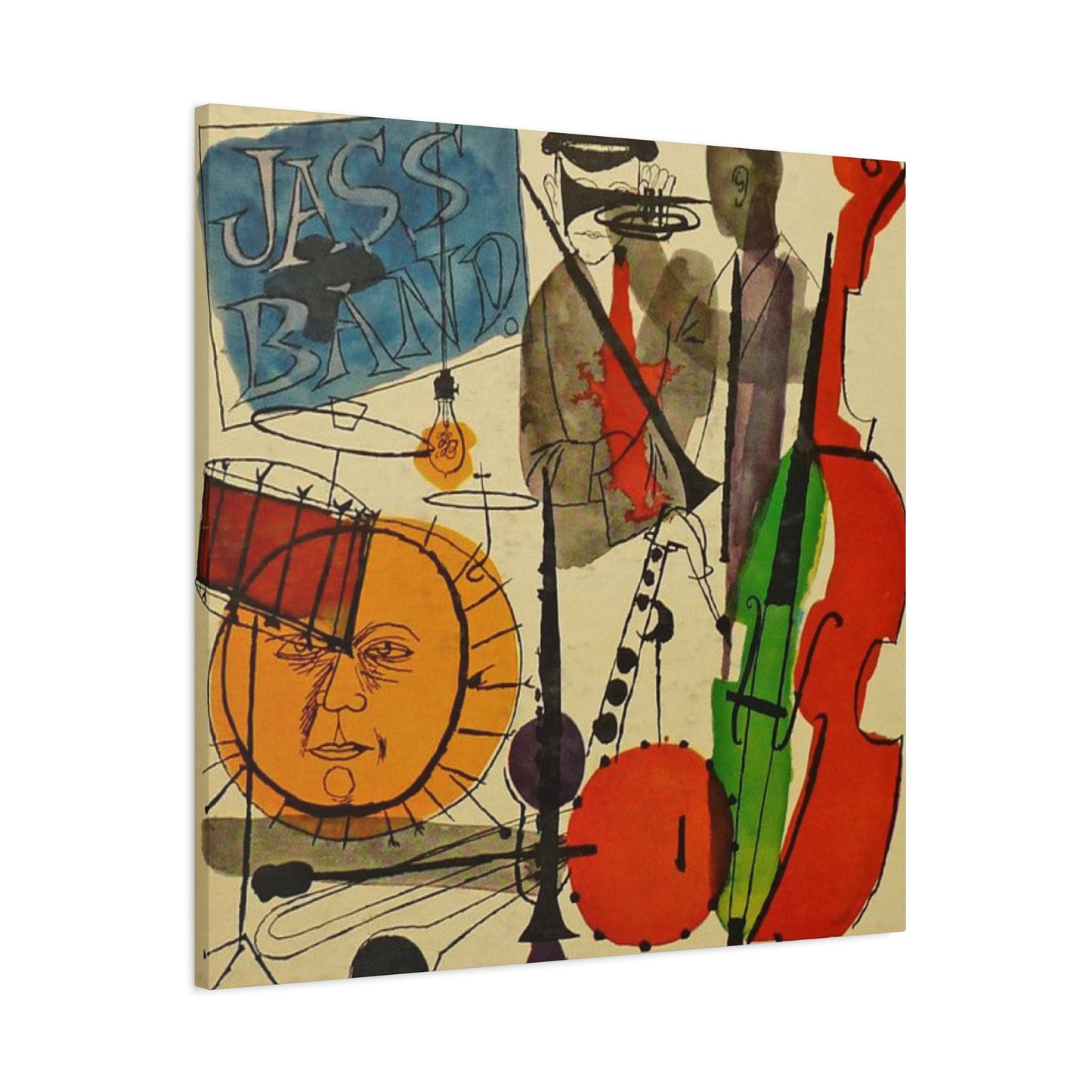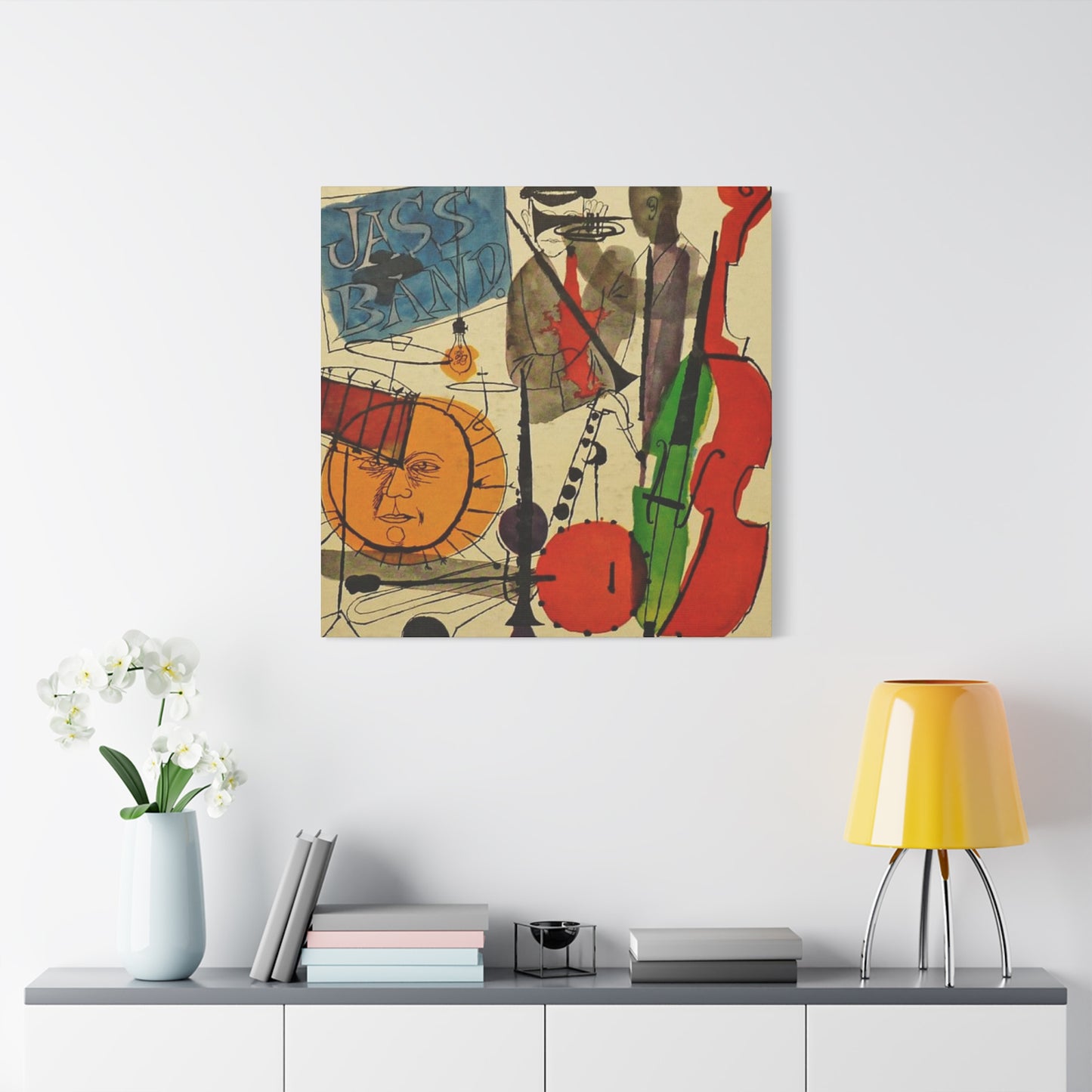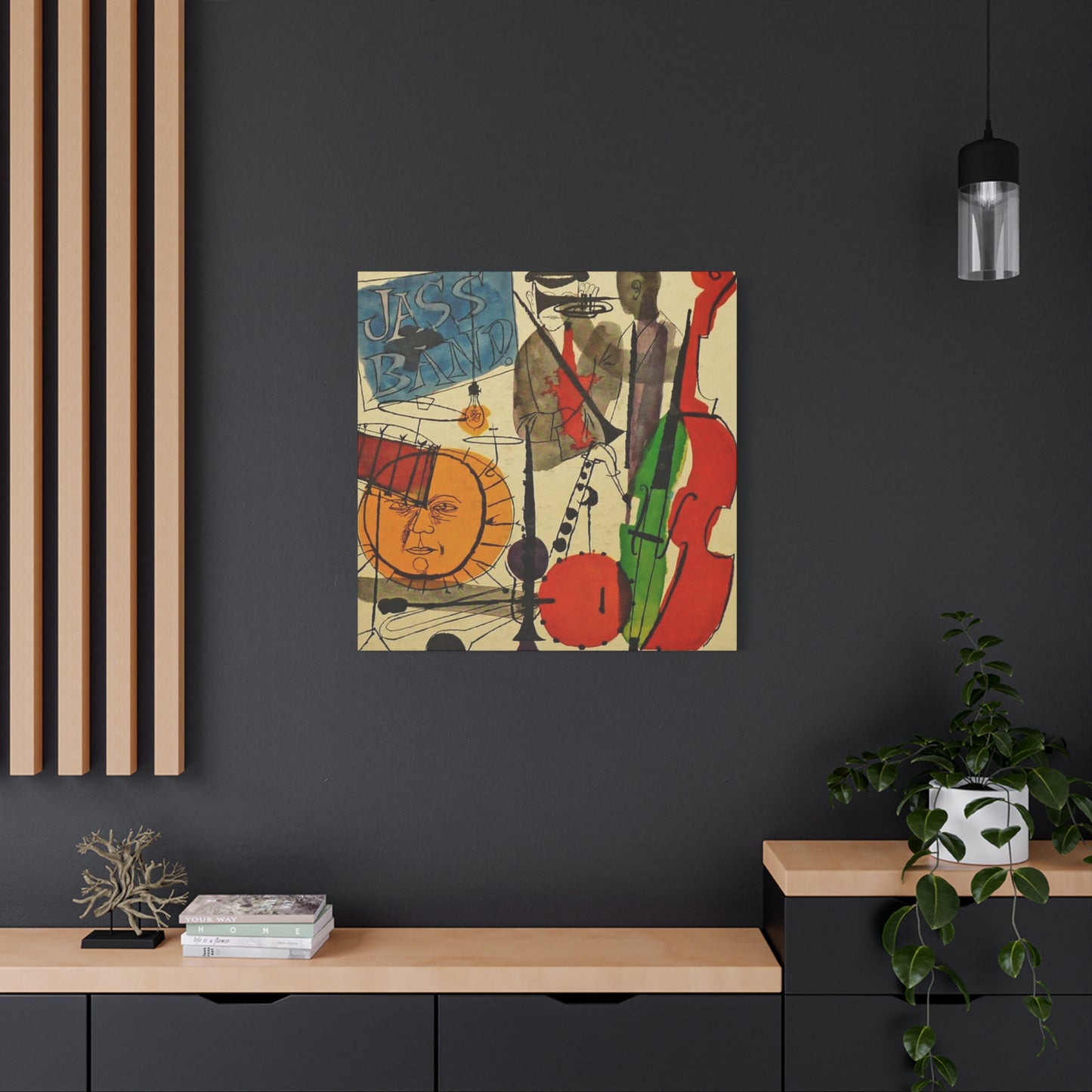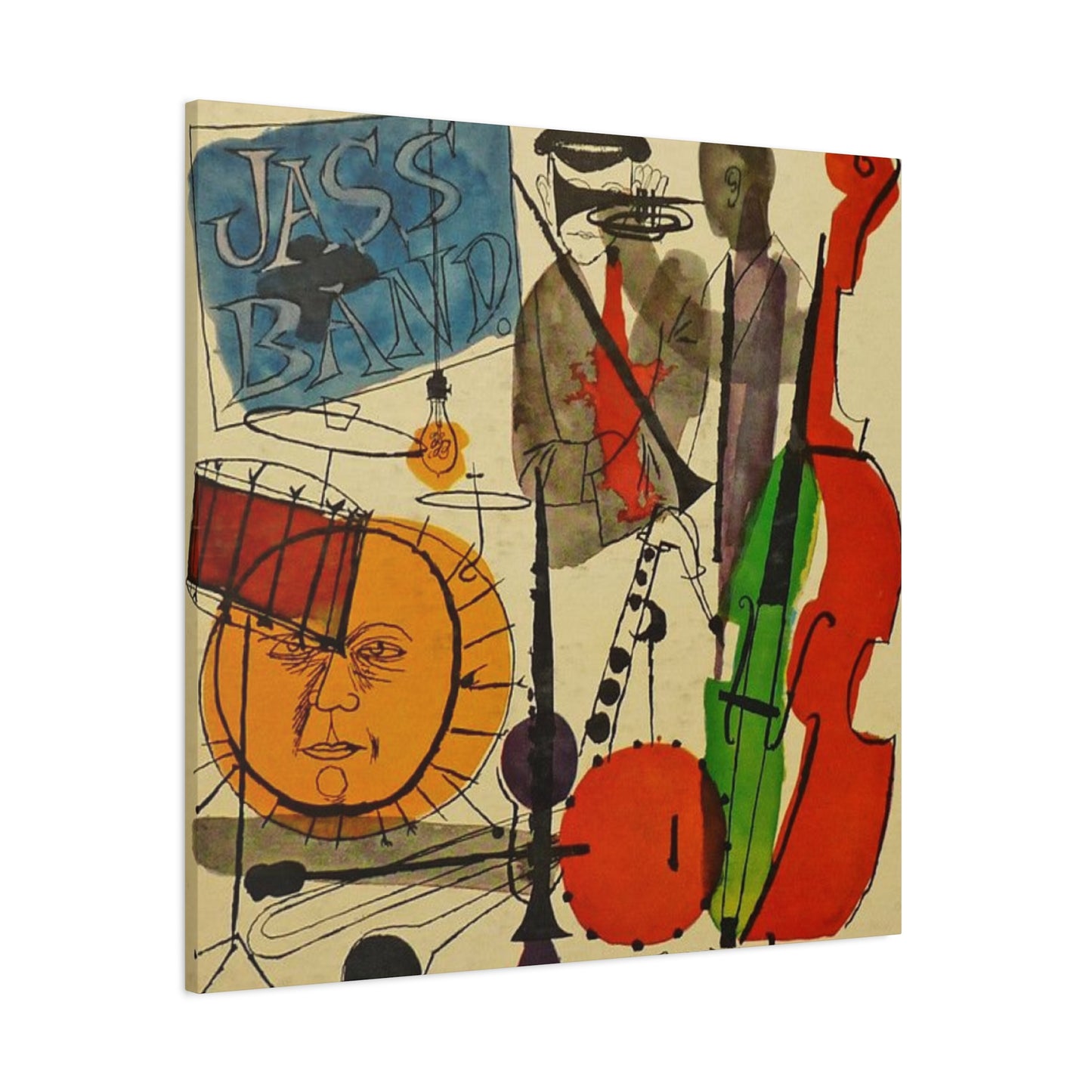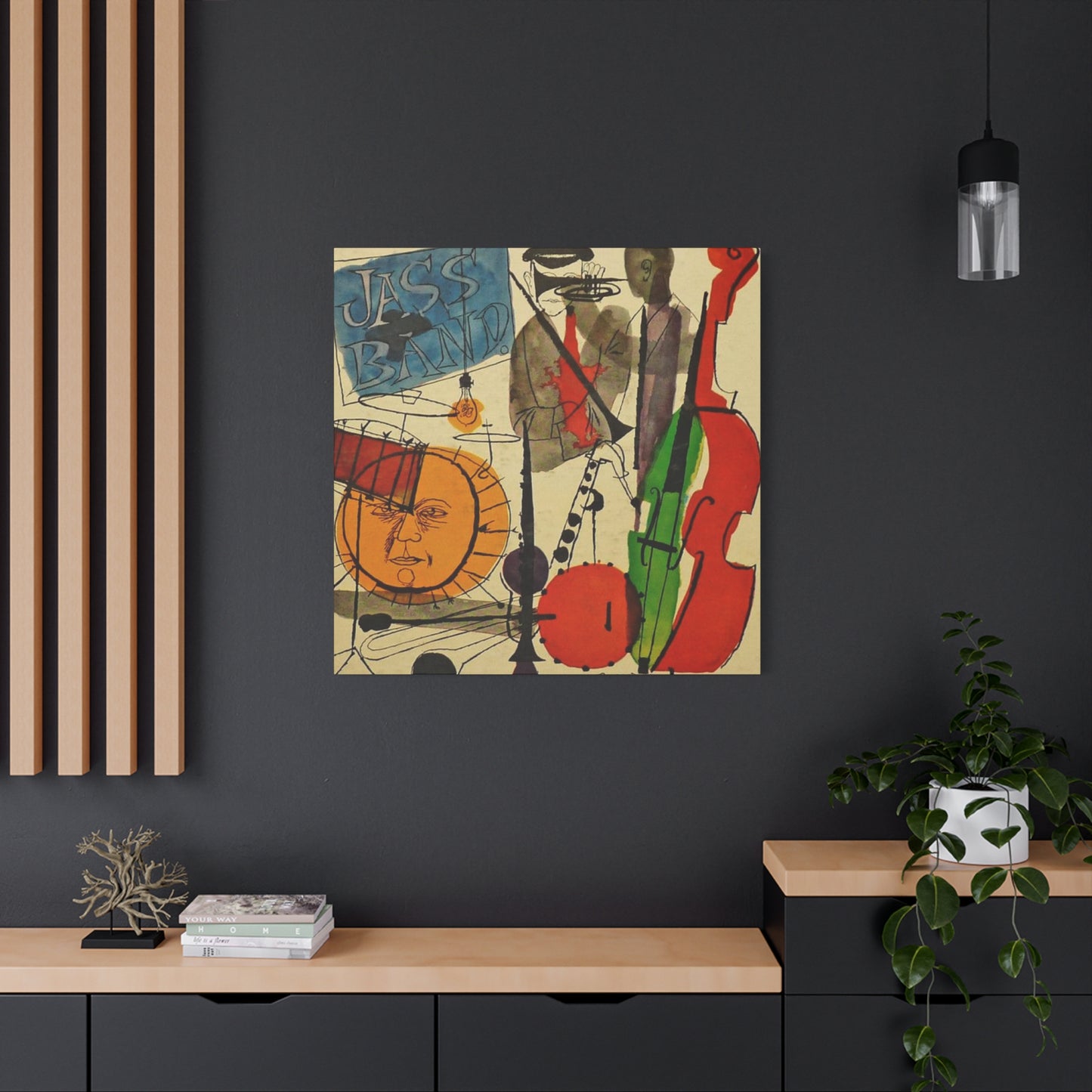A Visual Symphony: The Enduring Allure of Music Instrument Wall Art
The intersection of sound and sight creates a powerful emotional resonance that few other artistic pairings can achieve. Music, in its purest form, is an auditory experience—a fleeting series of vibrations that stirs the soul. Art, conversely, is a visual medium, a static representation of a moment, an idea, or a feeling. When these two worlds collide in the form of instrument wall art, something truly magical happens. The silent, visual depiction of a musical instrument becomes a vessel for all the potential sound it holds, a tribute to the melodies it has produced, and an inspiration for the music yet to be created. This art form is not merely decorative; it is a profound statement about passion, history, and the universal language of music. It allows us to hold onto the ephemeral nature of a song, giving it a permanent home on our walls and in our lives.
Whether you are a dedicated musician who spends hours with your chosen instrument, a passionate music aficionado with a deep appreciation for symphony and song, or simply someone who understands the power of aesthetic beauty, instrument wall art offers a unique and compelling way to enrich your personal space. It transforms a room from a simple dwelling into a sanctuary of creativity, a gallery of sonic potential, and a constant reminder of the harmony that music brings to the world. Each piece, be it a stark black-and-white photograph of a grand piano's keys or a vibrant abstract explosion inspired by an electric guitar solo, tells a story. It speaks of craftsmanship, of dedication, of emotional release, and of the intricate connection between the artist and their tool. This extensive exploration will delve into the multifaceted world of instrument wall art, examining its appeal, its application in interior design, and its deep-seated connection to the human experience of music, providing a comprehensive look at why these images continue to captivate and inspire us.
Celebrate Sound with Instrument Wall Art
To celebrate sound is to acknowledge its profound impact on our lives. Sound, in the form of music, is a fundamental pillar of human culture, a force that can dictate mood, evoke memories, and unite people across vast divides. Instrument wall art provides a tangible, visual method for this celebration. It is a declaration of allegiance to the power of melody and rhythm. Hanging a depiction of a cello or a trumpet on your wall is more than just an aesthetic choice; it is an act of appreciation for the centuries of innovation, artistry, and emotional expression that these objects represent. This form of decor allows the abstract world of music to manifest physically within your environment. You are, in essence, freezing a moment of sonic potential. The silent strings of a guitar on canvas still hum with the energy of a thousand possible chords. The gleaming brass of a saxophone print echoes with the ghost of a soulful jazz melody. This celebration is not loud or boisterous but quiet and profound. It serves as a daily homage to the joy, solace, and inspiration that music provides.
For a musician, seeing their instrument of choice portrayed as a piece of high art can be incredibly validating and inspiring. It elevates the tool of their trade from a mere object to a symbol of their passion. For the music lover, it acts as a tribute to their favorite genres, artists, and musical moments. A print of a vintage microphone might evoke the golden age of swing, while an image of a drum kit could pulse with the raw energy of rock and roll. The choice of instrument wall art becomes a reflection of personal identity, a visual playlist that tells visitors about the soundtrack of your life. Furthermore, celebrating sound through visual art introduces a fascinating sensory interplay. Your eyes perceive the form, color, and texture of the instrument, and your mind fills in the auditory gaps. This synesthetic experience enriches the artwork, making it more dynamic and engaging than a simple landscape or portrait. It’s an active form of appreciation, where the viewer participates in the completion of the artistic message. By choosing instrument wall art, you are curating an atmosphere that honors the invisible yet omnipresent power of music, creating a space where the beauty of sound is seen, felt, and celebrated every single day.
Bring the Beauty of Instruments to Your Walls
Musical instruments are, in themselves, masterpieces of design and craftsmanship. Long before they produce a single note, they are objects of immense physical beauty. The elegant curve of a violin's body, the intricate grain of the wood on an acoustic guitar, the polished gleam of a brass horn, and the stark, geometric perfection of a piano's keyboard are all testaments to human ingenuity and a deep understanding of aesthetics. Bringing this inherent beauty to your walls through art allows you to appreciate these instruments from a purely visual perspective, divorced from their auditory function yet deeply connected to it. This focus on form elevates the instrument to the level of sculpture. An art print can capture these details with stunning clarity, inviting the viewer to admire the subtle nuances that might be missed in a concert hall or a crowded room.
A macro photograph of a guitar's tuning pegs can reveal the fascinating interplay of metal and wood, highlighting the precision engineering required for perfect pitch. A wide-angle shot of a grand piano can emphasize its majestic presence and architectural lines, turning it into a landscape of sonic potential. The artist's interpretation can further enhance this beauty. An impressionistic painting might capture the shimmering light on a saxophone, focusing on the mood and atmosphere rather than precise detail. A minimalist line drawing could distill a cello down to its essential, graceful form, celebrating its silhouette. A pop art rendition of a drum kit might use bold, vibrant colors to convey the explosive energy of a beat. By hanging these pieces, you are essentially creating a gallery dedicated to the art of lutherie, engineering, and design. You are inviting a conversation about the physical nature of music-making tools.
This appreciation for the object itself adds a new layer to one's love for music. It builds a connection not just to the sound, but to the source of the sound. It honors the skilled artisans who spend their lives perfecting the construction of these instruments. Moreover, this type of wall art is incredibly versatile. The natural materials, elegant shapes, and timeless designs of classical instruments can complement a wide range of interior styles, from traditional and rustic to modern and industrial. The warm tones of wood, the cool sheen of metal, and the classic contrast of black and white keys can be used to anchor a room's color palette and add a touch of sophistication and culture. By bringing the physical beauty of instruments to your walls, you are celebrating the profound connection between functional design and aesthetic grace, creating a space that is both visually stunning and rich with cultural significance.
Art That Speaks Through Strings and Keys
There is a unique language spoken by art that depicts musical instruments, a silent narrative that resonates deeply with our understanding of emotion and expression. "Art that speaks through strings and keys" is a perfect encapsulation of this phenomenon. It suggests that the artwork itself, a static image, can convey the dynamic and emotional range of the music its subject creates. This is achieved through the artist's masterful use of composition, color, light, and perspective to imbue the image with a sense of life and potential sound. Consider the story told by a close-up photograph of a pianist's hands poised over the keys. It speaks of anticipation, of the pregnant pause before a powerful chord, or the delicate touch required for a gentle melody. The focus on the hands, the musician's direct connection to the instrument, tells a tale of skill, practice, and a lifetime of dedication.
The image is silent, yet it screams with the intensity of the music about to be born. Similarly, a painting of a lone acoustic guitar resting against a rustic wooden wall can speak volumes. It might evoke feelings of solitude, introspection, and the quiet comfort of folk music. The way light falls on the polished wood and steel strings can suggest a mood—warm and inviting, or cool and melancholic. The absence of a player allows the viewer to project their own musical memories and emotions onto the scene, making the artwork a deeply personal experience. The "speaking" quality of this art is also tied to the symbolic nature of the instruments themselves. Stringed instruments, like violins and cellos, are often associated with the human voice due to their ability to produce fluid, sustained notes that mimic singing.
An artwork featuring a violin can therefore speak of passion, sorrow, or romantic love without a single word being written. Keyboard instruments, particularly the grand piano, often symbolize complexity, grandeur, and intellectual depth. A powerful image of a piano can convey a sense of drama and sophistication. The art acts as a translator, converting the abstract language of music into a visual dialect that is universally understood. It taps into our collective cultural consciousness, using the familiar forms of strings and keys to communicate complex ideas and emotions. This form of art does not merely depict an object; it captures a voice. It allows the soul of the instrument, and the souls of all the musicians who have played it, to resonate from the canvas and fill the room with a silent, powerful story.
Turn Up the Style with Musical Instrument Prints
Integrating musical instrument prints into your decor is a definitive style statement, an effortless way to "turn up the style" and inject a dose of personality and sophistication into any space. This type of artwork transcends mere decoration; it becomes a central element of your home's character, signaling a deep appreciation for culture, creativity, and artistic expression. Unlike generic wall art, musical instrument prints carry an inherent narrative and a cool factor that is difficult to replicate. They serve as an immediate conversation starter, revealing something about the homeowner's passions and tastes without them having to say a word. The stylistic versatility of these prints is one of their greatest strengths. For a sleek, modern, or minimalist interior, consider high-contrast black and white photographs.
An image of a single, perfectly lit cymbal, a close-up of a piano's repeating keys, or the stark silhouette of a Fender Stratocaster can add a graphic, bold element that complements clean lines and a neutral color palette. These pieces act as focal points, drawing the eye and adding a layer of intellectual chic to the room. In a more traditional, rustic, or bohemian setting, prints that emphasize the natural materials of instruments work wonders. A canvas featuring the warm, rich tones of a cello's wood, the aged patina of a vintage banjo, or the intricate details of an acoustic guitar can bring warmth, texture, and a sense of history to the space. These images harmonize beautifully with wood furniture, natural textiles, and earthy color schemes. For those with an edgier, more eclectic, or industrial style, abstract or pop art interpretations of instruments can be transformative.
A vibrant, graffiti-style painting of a drum kit, a neon-lit depiction of a synthesizer, or a fragmented, cubist take on a saxophone can introduce a powerful burst of color and energy. These pieces are bold and unapologetic, perfect for a loft apartment, a creative studio, or any space that aims to challenge convention and stimulate the senses. Turning up the style also means thinking about composition and arrangement. A large-scale, single print of a grand piano can create a dramatic, theatrical effect in a living room or entryway. A curated gallery wall of smaller prints, featuring a variety of instruments from different angles and in different styles, can tell a more complex story and add a dynamic, collected-over-time feel to a study or hallway. By thoughtfully selecting and placing musical instrument prints, you are not just filling a blank wall; you are actively curating an environment that is stylish, personal, and resonant with the timeless cool of music itself.
Perfect Decor for Musicians and Music Lovers
For musicians and dedicated music lovers, curating a personal space is about more than just aesthetics; it's about creating an environment that reflects and fuels their passion. Instrument wall art stands out as the quintessential decor for this demographic, serving as a powerful source of inspiration, validation, and personal expression. It transforms a house into a home, and a practice room into a sanctuary. For a musician, their instrument is an extension of themselves. It is a partner in creativity, a tool for emotional release, and the product of countless hours of practice and dedication. Seeing that very instrument, or one like it, depicted as a beautiful piece of art on the wall can be profoundly affirming. It reinforces the importance of their craft and reminds them of the beauty and value of what they do. An art print of a vintage electric guitar hanging in a home studio can inspire the guitarist to pick up their own axe and create.
A serene painting of a grand piano in a living room can provide a moment of calm reflection for the pianist after a long day. This decor acts as a silent mentor, a constant companion on their musical journey. For the ardent music lover, who may not play an instrument but lives and breathes music, this art form is a way to wear their heart on their sleeve—or rather, on their wall. It is a sophisticated and artistic way to showcase their identity. Instead of a band poster, which can feel juvenile, a fine art print of a classic saxophone or a drum kit offers a more mature and timeless tribute to their favorite genres. It allows them to connect with the very sources of the sounds that have shaped their lives. A collection of prints featuring instruments from different cultures could reflect a love for world music. An image of a DJ's turntables could signify a passion for electronic music and hip-hop.
The walls become a curated exhibition of their auditory tastes. Furthermore, instrument wall art is functional in its ability to define a space. It can designate a specific area of a home as the "music corner," even if it's just a small nook with a record player and a comfortable chair. It helps to mentally and emotionally frame the space, signaling that this is a place for listening, creating, and appreciating sound. It fosters an atmosphere of creativity and concentration, which is beneficial for both active musicians and passive listeners. Ultimately, for those whose lives are deeply intertwined with music, instrument wall art is not just "perfect decor"—it is a necessary element of their environment. It speaks their language, understands their passion, and contributes to a space that is not only beautiful but also deeply, personally meaningful.
Wall Art That Strikes a Chord
The expression "strikes a chord" refers to something that resonates on a deep, emotional, or personal level. When applied to wall art, it describes a piece that does more than just decorate a surface; it connects with the viewer's innermost feelings, memories, and identity. Instrument wall art is uniquely positioned to achieve this connection because of the powerful and universal role music plays in our lives. A piece of art strikes a chord when it evokes a specific, personal memory. An image of a slightly worn, sunburst-finish acoustic guitar might transport someone back to their teenage years, learning their first songs in their bedroom. A print of a school band's drumline could trigger fond recollections of camaraderie and performance. A picture of a violin might remind someone of their grandmother, who played classical music every Sunday morning.
These artworks act as visual keys, unlocking doors to our past and allowing us to relive cherished moments. The instrument depicted becomes a symbol for a whole chapter of our lives, and seeing it on the wall is a daily, gentle reminder of that personal history. Beyond specific memories, this art can strike a chord by tapping into a viewer's aspirations and dreams. A young, aspiring DJ might hang a stylized print of a turntable and mixer in their room. This piece is more than decoration; it's a vision board, a symbol of their goal, and a source of motivation. It represents the future they are working towards, and it fuels their ambition every time they look at it. Similarly, someone who has always dreamed of learning the piano might be drawn to an elegant photograph of a keyboard, the image serving as a beautiful and persistent encouragement to finally pursue that passion. The emotional resonance of the music itself is another way this art strikes a chord. Different instruments are culturally and emotionally coded.
The saxophone is inextricably linked with feelings of romance, melancholy, and late-night jazz coolness. Art featuring a saxophone can instantly imbue a room with that specific mood. The electric guitar often screams rebellion, freedom, and raw power. A dynamic print of a guitar can energize a space and connect with the viewer's own rebellious spirit. The harp, with its angelic connotations, can create a sense of peace and serenity. The artist’s rendering of the instrument—its lighting, color, and context—amplifies this emotional coding. A dark, moody photograph of a cello will strike a very different chord than a bright, cheerful painting of a ukulele. By selecting a piece of instrument wall art that aligns with their personal history, aspirations, or desired emotional atmosphere, an individual can curate a space that feels deeply and authentically their own. The art becomes a part of their story, a visual note in the symphony of their life that resonates perfectly every time they see it.
Let the Music Live On Your Walls
Music is, by its very nature, an ephemeral art form. A note is played, it hangs in the air for a moment, and then it is gone, replaced by the next, or by silence. It exists only in the present moment of its performance and in the memory of those who hear it. The profound desire to capture this fleeting beauty is what drives us to record music, and it is the same impulse that finds a visual outlet in instrument wall art. The idea to "Let the Music Live On Your Walls" is a poetic call to action, inviting us to give sound a permanent, physical home. It is about creating a visual testament to the enduring power of music, ensuring its presence is felt even in moments of silence. This is achieved by choosing artwork that not only depicts an instrument but also successfully captures its essence and the energy of its performance. An artwork that makes music "live" is one that is dynamic and full of implied sound.
Consider a photograph of a drum kit captured at the precise moment the drummer strikes the crash cymbal. You can almost see the shockwave of sound emanating from the point of impact. The image is frozen in time, yet it is anything but static. It is alive with the explosive energy of that single beat. Hanging this on your wall ensures that the raw power of rock or jazz drumming has a constant, living presence in your space. Similarly, a painterly depiction of a violinist, with fluid, blurred lines suggesting the rapid movement of the bow across the strings, makes the music visible. The artist translates the sound's vibration into the visual vibration of their brushwork. The melody doesn't just fade away; it is woven into the very fabric of the canvas, where it can be appreciated indefinitely. This concept also extends to the instrument at rest.
An image of a grand piano in a quiet, sunlit room can still make music live on the walls. It represents potential and memory. It holds the echoes of every piece ever played on it and the promise of every piece yet to be played. It creates an atmosphere of serene creativity, where the silence is not empty but filled with the anticipation of music. By curating a collection of such art, you are essentially building a visual symphony. Each piece represents a different section of the orchestra, a different genre, a different mood. A vibrant print of a trumpet might be the brassy fanfare, a moody image of a cello the melancholic adagio, and a pop art guitar the energetic finale. Together, they create a harmonious environment that celebrates music in all its forms. You are no longer just a passive listener; you become a curator, an orchestrator of a visual and emotional experience. You are giving music a physical form, allowing its spirit to permeate your home and ensuring that its beautiful, life-affirming energy lives on, day after day.
Bold and Artistic Instrument Wall Décor
Moving beyond simple, straightforward representations, "Bold and Artistic Instrument Wall Décor" ventures into the realm of interpretation, abstraction, and high-concept art. This approach is for those who want their decor to be more than just a tribute to music; they want it to be a powerful artistic statement that challenges perception and sparks conversation. This style is characterized by its daring use of color, unconventional compositions, and a willingness to deconstruct and reimagine the familiar forms of musical instruments. A bold and artistic piece might take a recognizable instrument and present it in a completely new light. Imagine a saxophone not as a whole, but as a series of fragmented, overlapping shapes, rendered in a cubist style that attempts to show the instrument from multiple perspectives at once. The artwork becomes a visual exploration of the instrument's complex form and the multifaceted nature of its sound. Or consider an electric guitar splattered with vibrant, Pollock-esque drips and splashes of paint.
This doesn't just depict the guitar; it visually screams the chaotic, rebellious energy of rock and roll. The art becomes a performance in itself. Color is a primary tool in this artistic arsenal. Instead of realistic brass or wood tones, an artist might paint a violin in electric blue or a piano in fiery crimson. These non-naturalistic colors sever the instrument from its traditional context, forcing the viewer to see it as a pure shape and to consider the emotional connotations of the chosen hue. A crimson piano might suggest passion, drama, or danger, adding a layer of psychological complexity to the artwork. Abstract art is another key component of this style. An artist might create a piece that is not a picture of an instrument, but a visual representation of a musical concept using the instrument's form as a starting point.
A swirl of colors might represent a musical crescendo. A series of sharp, jagged lines might evoke a staccato rhythm. A ghostly, ethereal outline of a cello could be used to explore themes of memory and loss associated with a particular piece of music. This type of decor is perfect for modern, contemporary, and eclectic interiors where art is meant to be a focal point. It pairs well with minimalist furniture, as it provides a powerful burst of visual energy. In an industrial loft, a large-scale, bold piece can hold its own against exposed brick and high ceilings. Choosing bold and artistic instrument wall décor is a confident move. It says that you appreciate not only music but also the cutting edge of visual art. It shows a personality that is not afraid to embrace the unconventional and to fill a home with objects that are not just beautiful, but also thought-provoking and intensely expressive.
Classic Instruments, Timeless Canvas Prints
There is an enduring appeal to the classics, both in music and in art. "Classic Instruments, Timeless Canvas Prints" speaks to the desire for elegance, tradition, and a sense of permanence in our decor. This category focuses on the instruments that form the bedrock of orchestral and chamber music—the violin, the cello, the grand piano, the flute—and presents them on canvas in a way that emphasizes their timeless beauty and historical significance. These are not trendy or fleeting images; they are pieces of art that will remain stylish and relevant for generations. The choice of classic instruments is significant. A violin, for instance, has a design that has remained largely unchanged for centuries. It is a symbol of masterful craftsmanship, dedication, and the sublime beauty of classical music. A canvas print that captures the rich, lustrous varnish of a Stradivarius or the delicate f-holes of a cello connects us to this long and storied history.
It brings a sense of culture, refinement, and intellectual weight into a room. These artworks are perfectly at home in traditional, transitional, or even formal interiors, complementing antique furniture, rich textiles, and sophisticated color palettes. The canvas medium enhances this timeless quality. The textured surface of the canvas adds a painterly feel even to photographic prints, lending them a sense of artistry and substance. Unlike glossy posters, canvas prints have a matte finish that absorbs light, creating a soft, warm presence that feels established and permanent. A black-and-white canvas print of a grand piano, for example, can be incredibly powerful. It distills the instrument down to its essential elements of form and contrast, creating a look that is at once classic and modern. It speaks of a bygone era of glamour and sophistication while remaining perfectly chic in a contemporary setting.
The style of representation in these timeless prints often leans towards realism or a soft, romantic impressionism. The goal is to celebrate the instrument's inherent beauty without excessive artistic intervention. A still life composition, perhaps with a violin resting on a stack of sheet music with a soft light filtering in from a window, can create a scene of quiet contemplation and scholarly pursuit. A close-up shot focusing on the intricate scroll of a cello's neck highlights the artistry of the luthier. These are quiet, confident pieces of art. They do not shout for attention but rather invite a closer look, rewarding the viewer with their fine detail and masterful composition. Choosing timeless canvas prints of classic instruments is an investment in enduring style. It is about creating a space that feels grounded, cultured, and serene. It reflects an appreciation for things that are built to last, for melodies that have stood the test of time, and for an aesthetic that will never fade.
Your Favorite Instruments, Framed in Art
The act of framing something is an act of elevation. It separates the object from its surroundings, designates it as important, and presents it for admiration. "Your Favorite Instruments, Framed in Art" captures this idea perfectly. It's about taking the instrument that holds a special place in your heart—the one you play, the one you love to listen to, the one that defines your favorite musical era—and giving it the place of honor it deserves on your wall. This concept is deeply personal and is all about self-expression. The choice of instrument becomes a reflection of your identity. For a rock guitarist, their favorite instrument might be a Gibson Les Paul. A framed art print of this iconic guitar is more than just decor; it's a badge of honor, a tribute to their heroes like Jimmy Page or Slash. It connects them to the lineage of rock and roll and serves as a daily inspiration.
For a classical musician, their favorite might be the French horn. A beautifully framed photograph of its complex, coiled tubing is an acknowledgment of the difficulty and unique beauty of their chosen craft. The frame itself plays a crucial role in this presentation. The choice of frame—be it a simple, modern black frame, an ornate, traditional gold one, or a rustic, weathered wood frame—can dramatically alter the mood and style of the artwork. A sleek metal frame might be used for a contemporary, graphic print of a synthesizer, enhancing its modern, technological feel. A thick, dark wood frame could be paired with a warm, realistic painting of a cello, amplifying its classic, scholarly vibe. The frame works in concert with the image to create a cohesive artistic statement. The idea of "framed in art" also suggests a certain level of quality and intentionality. This isn't about tacking a poster to the wall; it's about making a deliberate choice to invest in a piece of fine art.
The matting, the quality of the print, and the craftsmanship of the frame all contribute to the overall impact. This elevates the entire space, signaling that this is a home where art and personal passions are taken seriously. Furthermore, creating a gallery wall of your favorite instruments, each individually framed, can tell a rich and evolving story. You might start with the acoustic guitar you first learned to play on, add a print of the saxophone to represent your love of jazz, and then include a piano to symbolize a broader appreciation for musical composition. Each framed piece is a chapter in your personal musical biography. By framing your favorite instrument in art, you are doing more than decorating. You are curating your own personal museum. You are celebrating the objects that bring you joy, inspiration, and a deep sense of connection, and you are giving them the beautiful, dignified presentation they command.
Jazz Up Any Room with Music Art
The phrase "Jazz Up Any Room" is a playful and energetic call to infuse a space with life, character, and a touch of improvisational flair—qualities that are the very soul of jazz music itself. Using music art, particularly pieces inspired by the instruments and atmosphere of jazz, is one of the most effective ways to achieve this. It’s about creating a space that feels cool, sophisticated, and alive with creative energy. Jazz music is synonymous with a certain aesthetic: dimly lit clubs, smoky atmospheres, spontaneous creativity, and a deep, soulful emotion. Art that captures this can instantly transport that vibe into your home. A black-and-white photograph of a trumpet player, eyes closed in concentration, can bring a sense of intimate, focused passion to a study or listening room. An atmospheric painting of a jazz trio on stage, with loose brushwork and a moody color palette, can transform a living room into a sophisticated lounge.
The key instruments of jazz—the saxophone, trumpet, double bass, piano, and drums—are all visually compelling subjects. A close-up print of a saxophone's bell, gleaming under a single spotlight, is the epitome of cool. The upright double bass, with its commanding size and deep wood tones, can be represented in art to add a grounding, soulful presence to a room. A dynamic shot of a drummer's hands, a blur of motion over the snare and cymbals, can inject a powerful sense of rhythm and energy. "Jazzying up" a room doesn't always mean being literal. Abstract art inspired by the syncopated rhythms and improvisational nature of jazz can be incredibly effective. A piece with interlocking geometric shapes and a vibrant, off-beat color scheme can visually represent the complex harmonies and call-and-response patterns of a bebop tune.
A canvas with fluid, flowing lines of color could evoke the smooth, mellow tones of a cool jazz ballad. This type of art is perfect for breaking up the monotony of a conventional space. In a minimalist or neutral-toned room, a single, vibrant piece of jazz-inspired art can act as a stunning focal point, adding a much-needed splash of personality and color. In a more eclectic setting, it can complement other artistic elements, contributing to a rich, layered, and cultured atmosphere. It’s also about fostering a certain lifestyle. Hanging jazz art suggests an appreciation for creativity, history, and a certain brand of effortless sophistication. It creates an environment that is conducive to conversation, relaxation, and inspiration. It’s the perfect backdrop for entertaining guests, enjoying a quiet drink, or simply getting lost in a great album. By using music art with a jazz sensibility, you are doing more than decorating; you are curating a mood and "jazzing up" your home with the timeless spirit of America's greatest art form.
Instrumental Beauty for Any Space
The universal appeal of musical instruments lies in their dual nature: they are both functional tools for creating sound and objects of inherent aesthetic value. This duality makes "Instrumental Beauty for Any Space" a reality. Regardless of a room's function, size, or style, there is a piece of instrument wall art that can enhance its atmosphere and elevate its design. The key is to match the instrument, the artistic style, and the scale of the artwork to the specific needs of the space. In a living room, often the social hub of the home, you might opt for a large, statement piece. A grand canvas print of a piano or a full drum kit can serve as a powerful focal point above a sofa or fireplace. It sparks conversation and establishes a cultured, creative tone for the entire home. The choice of instrument can set the mood: a classic violin suggests elegance, while an electric guitar hints at a more modern, energetic household.
For a bedroom, a space for rest and rejuvenation, the art should be more personal and serene. A soft, impressionistic painting of a harp or a flute can create a calming, ethereal atmosphere. A simple, minimalist line drawing of an acoustic guitar can add a touch of quiet creativity without overwhelming the space. The goal is to choose an image that resonates personally and contributes to a sense of peace and tranquility. In a home office or study, the art can serve as a source of inspiration and focus. A detailed architectural-style drawing of a complex instrument like a cello or a French horn can reflect a sense of precision, intellect, and dedication. A black-and-white photograph of a vintage microphone might inspire a writer or speaker. The art in this space should be sophisticated and thought-provoking, fostering an environment of concentration and high-level thinking.
Even utilitarian spaces can be enhanced by instrumental beauty. In a kitchen or dining area, a series of smaller prints featuring charming instruments like a ukulele, a mandolin, or a harmonica can add a playful, rustic touch. These images can evoke feelings of communal gatherings, folk music, and simple joys, making the space feel warmer and more inviting. A hallway or entryway, the first impression of your home, can be transformed by a curated gallery wall of instrument art. Mixing different instruments, styles, and frame sizes can create a dynamic and engaging introduction to your home's personality, telling a story of your diverse musical tastes from the moment someone walks in. The versatility of this theme is its greatest strength. From the grandeur of a concert hall to the intimacy of a bedroom, the elegance of a classic cello to the raw energy of a drum set, there is an artistic representation of instrumental beauty that can perfectly complement and complete any space in the home.
Decor That Hits the Right Note
In the world of interior design, achieving a harmonious and balanced space is the ultimate goal. "Decor That Hits the Right Note" is a clever metaphor that uses musical terminology to describe decor that is perfectly attuned to its environment and the personality of its owner. Instrument wall art, by its very nature, is uniquely equipped to fulfill this role. It can be the final, perfect element that ties a room together, creating a composition that is both visually and emotionally resonant. Hitting the right note is about achieving balance. A room with very structured, linear furniture can be softened and given a sense of flow by a piece of art featuring the elegant curves of a violin or a saxophone. Conversely, a room with a very soft, organic feel can be given a grounding anchor point by a graphic, high-contrast print of a piano keyboard. The artwork acts as a visual counterpoint, providing the necessary balance to make the overall design feel complete and intentional.
It's also about complementing the room's color story. Instrument art offers a rich and versatile palette. The warm, deep browns and ambers of wooden instruments can bring a natural, earthy warmth to a space. The cool, reflective silvers and golds of brass and percussion instruments can add a touch of metallic glamour and sophistication. A black-and-white print can provide a timeless, neutral element that works with any color scheme, while a bold, abstract piece can be used to introduce a vibrant accent color that energizes the entire room. The art "hits the right note" when its colors harmonize with the existing furnishings and paint. The emotional tone of the room is another crucial aspect.
The right piece of decor can establish or enhance a specific mood. For a vibrant, social space like a dining room, an energetic piece depicting a full band or a dynamic drum solo might be the right note. For a quiet reading nook, a contemplative still life of a single, classical instrument would be more appropriate. The art becomes a key instrument in the orchestra of the room's atmosphere, playing its part to create the desired emotional experience for its inhabitants. Ultimately, decor that hits the right note feels authentic and personal. It doesn't feel forced or chosen from a generic catalog. Instrument wall art excels here because it is so deeply tied to passion and identity. When you choose a print of an instrument you love, you are infusing the space with your own personality. That authenticity is the "right note" that transforms a well-designed room into a beloved home. It's the element that makes the space truly sing.
Art Inspired by the Heart of Music
Music is an art form that emanates from the heart. It is a direct channel for human emotion, capable of expressing joy, sorrow, love, and anger in ways that words often cannot. "Art Inspired by the Heart of Music" refers to a genre of visual art that seeks to capture this raw, emotional core. It goes beyond the physical representation of an instrument and instead attempts to visualize the feeling of the music itself. This is art that is less concerned with technical accuracy and more focused on conveying a mood, an energy, or a spiritual state. An artist creating work from this perspective might listen to a powerful piece of music—a passionate cello sonata, an explosive rock anthem, a complex jazz improvisation—and then translate their auditory and emotional response onto the canvas. The resulting artwork might be highly abstract.
A flurry of red and orange brushstrokes could represent the fiery passion of a flamenco guitar. Cool, flowing waves of blue and green might capture the melancholic drift of a Miles Davis trumpet solo. The instrument itself may be barely visible, perhaps just a ghostly outline or a single suggestive shape, with the true subject being the invisible force of the music. This type of art often focuses on the musician as the conduit for this emotion. The artwork might depict a performer lost in their craft, their body language conveying the intensity of their connection to the music. A painting of a blues guitarist with a pained expression, fingers gripping the fretboard, tells a story of struggle and release. A photograph of a conductor, arms outstretched, captures the moment of channeling the collective energy of an entire orchestra. The focus is on the human element, the "heart" that breathes life into the instrument.
The inspiration can also come from the metaphorical heart of music—its structure and theory. An artist might create a geometric abstraction based on the mathematical principles of a Bach fugue, with interlocking patterns and repeating motifs representing the counterpoint. Another might create a minimalist piece with simple color fields to represent the open, meditative spaces in ambient music. This is a more intellectual approach, but it is still rooted in a deep appreciation for the fundamental building blocks of musical expression. For the homeowner, this art offers a very different experience. It is not just a picture of an object; it is an invitation into an emotional landscape. It can set a powerful mood in a room, encouraging introspection, passion, or creative energy. It is for the person who feels music on a profound level and wants their living space to reflect that deep, heartfelt connection. It is art that doesn't just show you what music looks like, but what it feels like.
Conclusion:
The journey through the world of instrument wall art reveals a rich and deeply resonant form of expression that transcends mere interior decoration. It is a celebration of the profound, symbiotic relationship between the audible art of music and the visual art of image-making. As we have explored, this genre is not a monolith; it is a vast orchestra of styles, moods, and intentions. From the bold, abstract interpretations that seek to visualize the very energy of a soundwave, to the classic, timeless canvases that pay homage to the centuries of craftsmanship embodied in a violin or a piano, there is a piece of art to strike a chord with every individual soul. This art form provides a unique bridge to our own identities. For the dedicated musician, it is a source of validation and daily inspiration, a reflection of their life's passion.
For the ardent music lover, it is a sophisticated and personal way to curate an environment that echoes the soundtrack of their life, transforming a home into a gallery of their own tastes and memories. The true power of instrument wall art lies in its ability to make the ephemeral permanent. It captures the fleeting magic of a musical note and gives it a lasting home on our walls, allowing the silent potential of a guitar's strings or the imagined resonance of a saxophone's bell to fill our spaces even in moments of quiet. It is decor that "hits the right note," achieving a harmony between color, form, and emotion that can complete a room's design symphony.
Whether "jazzing up" a living room with the cool sophistication of a jazz trio, creating a serene sanctuary with the ethereal beauty of a harp, or infusing a studio with the raw power of an electric guitar, these artworks are powerful tools for atmospheric creation. They allow us to live in a state of "musical vibes only," where the creative, soulful, and unifying spirit of music is a constant and visible presence. Ultimately, selecting a piece of instrument wall art is an act of personal storytelling. It is a choice to surround oneself with the symbols of one of the most powerful and universal human experiences. It is an acknowledgment that a musical instrument is more than just an object of wood, metal, and string; it is a masterpiece of design, a conduit for emotion, and a vessel for the heart of music. By bringing these images into our lives, we ensure that the music never truly stops; it simply finds a new, beautiful, and enduring way to live on.

















